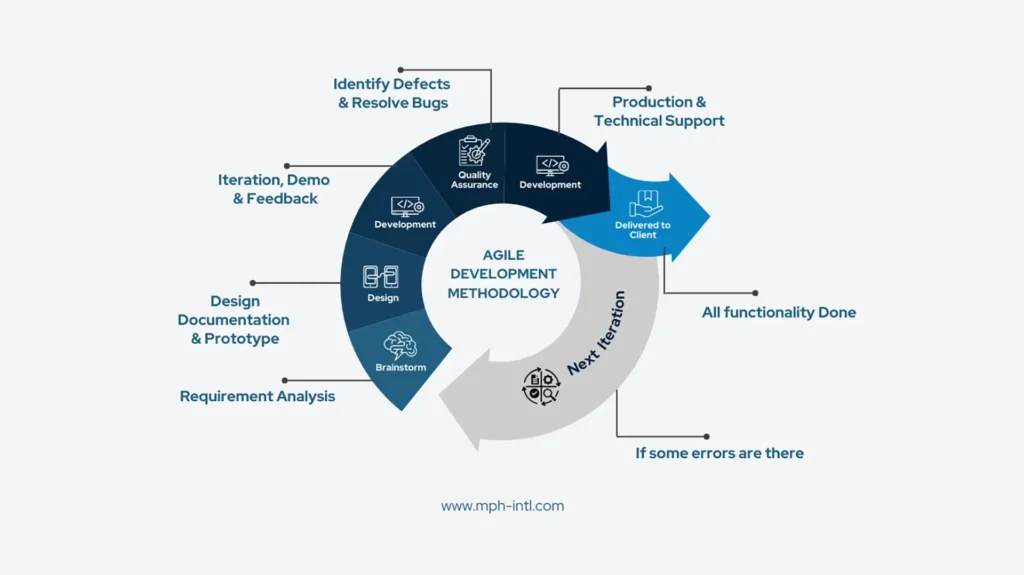Agile software development is a powerful methodology that emphasizes collaboration, rapid delivery, and customer satisfaction – a GO-TO process of successful startups.
In our world of fast-paced software development driven by our user’s cravings for the next best thing, Agile has become a cornerstone methodology, enabling teams to deliver high-quality products efficiently and quickly. Agile software development is an iterative approach that focuses on customer feedback and continuous improvement. Unlike traditional approaches that follow a linear path, it breaks projects or feature requests into small, manageable units called sprints, where teams can respond quickly to changes and new requirements.
Basically, Agile focuses on a continuous cycle of short iterations based on customer feedback and current business needs.
One of the most popular frameworks within Agile is Scrum, which structures work into fixed-length iterations, typically two to four weeks long. Each sprint begins with a planning meeting, where the team defines the goals and tasks for the duration of the sprint. Daily stand-up/scrum meetings are held to track progress and address any obstacles. At the end of the sprint, there is a retrospective meeting that allows the team to discuss what went well and what could be improved in future sprints.
Another key aspect of Agile is the emphasis on customer or stakeholders involvement. Regular feedback loops ensure that the product evolves within user expectations and market demands. This iterative process helps in identifying and resolving issues early, thus reducing the risk in the development cycle. By involving customers throughout the project, teams can deliver more relevant and user-centric solutions.
Agile also promotes continuous integration and continuous delivery (CI/CD), practices that automate the testing and deployment of code. This approach allows for frequent releases of smaller increments, ensuring that new features and improvements are delivered to users as soon as they are ready. CI/CD pipelines help maintain efficient delivery by automatically running tests and deploying code to production environments, reducing manual errors and accelerating the release process.
Agile software development is a powerful methodology that emphasizes collaboration, rapid delivery, and customer satisfaction. By breaking down projects into iterative cycles, involving customers in the development process, and embracing continuous improvement, it enables teams to deliver high-quality software that meets the ever-changing needs of users. Whether you're a startup or an established enterprise, adopting Agile practices can significantly improve your software development effectiveness and drive business success.
For more insights on software development practices and how they can benefit your organization, explore our services.


Subscribe to our newsletter to receive the latest updates and promotions from MPH straight to your inbox.